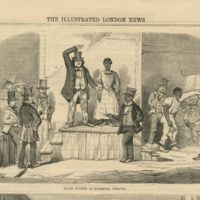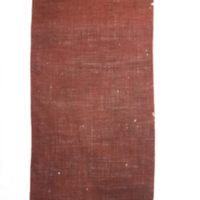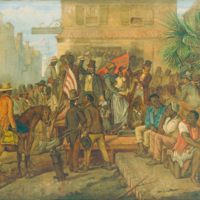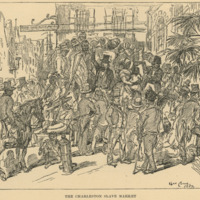The Auction
Written and visual descriptions of the slave trade often focused on the auction itself. Much like a theatrical show, the auction usually took place on a raised platform with the auctioneer, audience, and the enslaved expected to enact their particular roles. Observers described the drama of the bidding and the attempts of the auctioneer to coax the price ever upward.
In counties and towns, auctions often occurred on the courthouse steps or a designated street corner, usually near a popular tavern. In Richmond, the business of slave trading was irregular in the 1820s and 1830s. Auctions often occurred with the liquidation of an estate and usually took place at the Eagle's Tavern on Main Street near 12th Street. By the 1840s and 1850s, auctioneers began to specialize in selling people. Richmond’s auction rooms were concentrated on and around Wall Street (now 15th Street) and were generally small, low-ceilinged, dismal rooms with little furniture or decoration. The auction rooms were clustered near one another, and sales were held one after the other, with the crowd moving from one auction room to the next. As many as 100 people crowded into these spaces to watch the auctioneer, who stood on a block with the people he was selling. Basements of several public buildings, including the Odd Fellows Lodge, the Exchange Hotel, and the St. Charles Hotel, also served as auction rooms. Auctions occurred six days a week, all year long.



